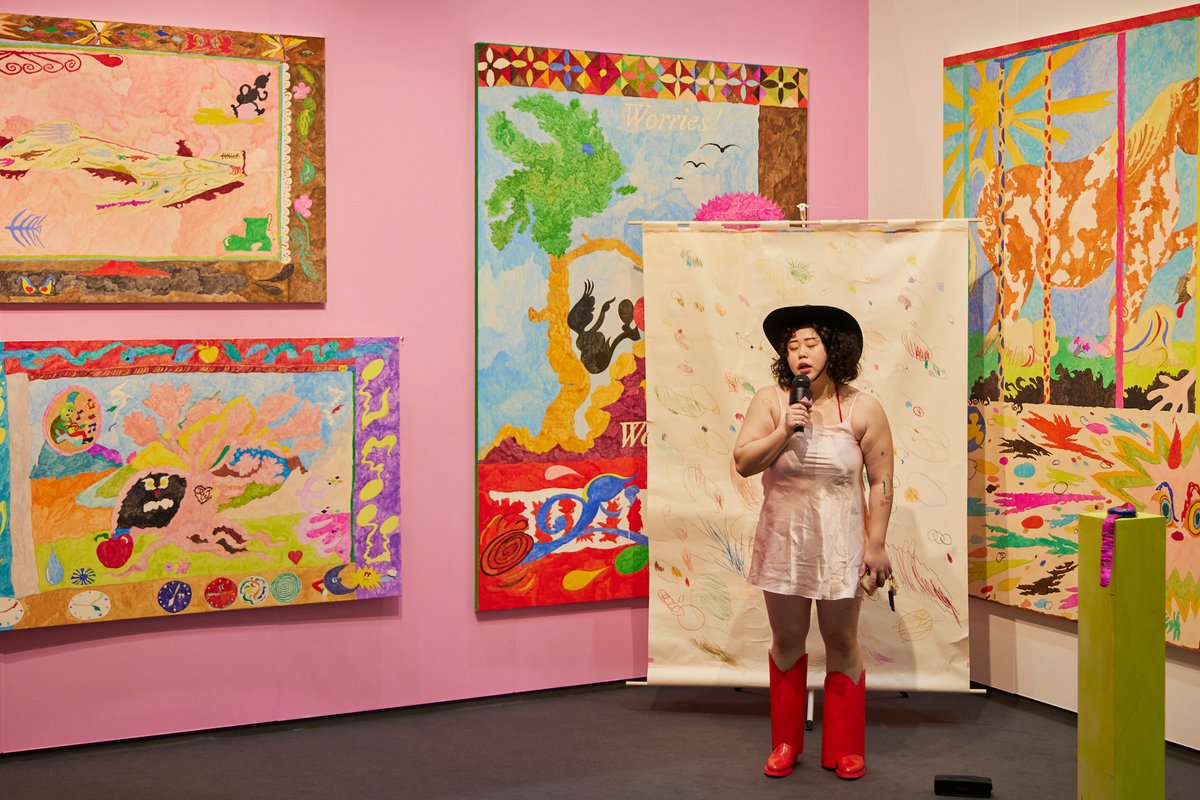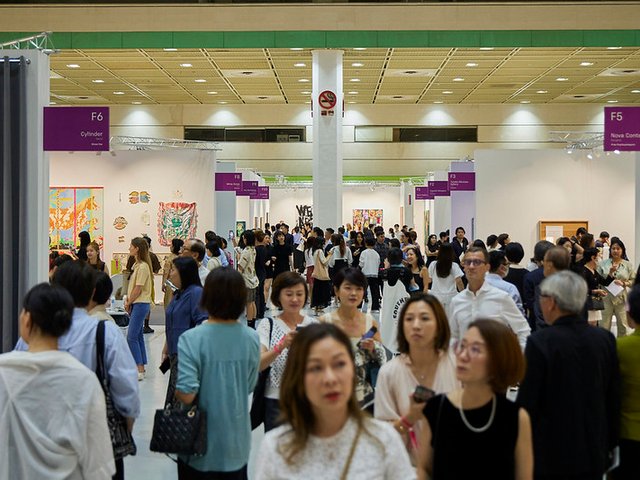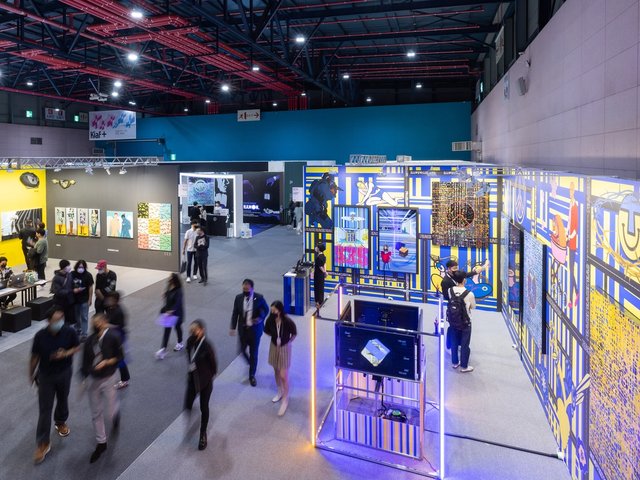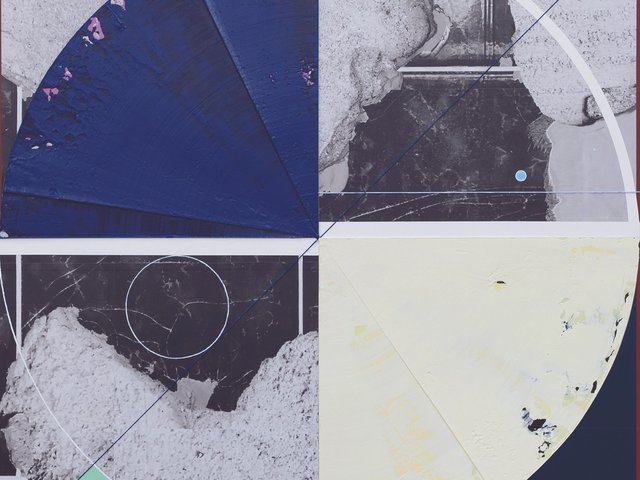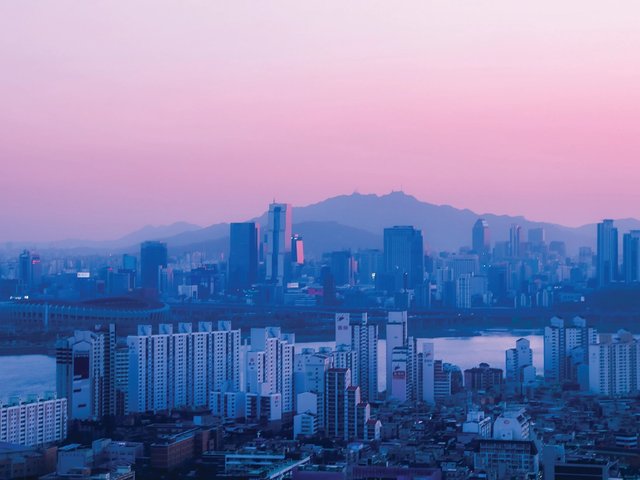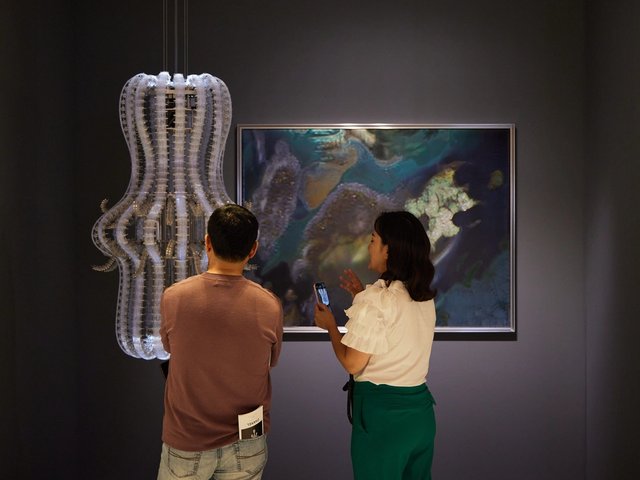International galleries at the second edition of Frieze Seoul (until 9 September) have brought plenty of works by blue-chip Korean artists, from seminal figures like the Dansaekhwa painters Park Seo-bo and Chung Sang-Hwa to the video art pioneer Nam June Paik, sculptor Haegue Yang and multi-disciplinary artist Lee Bul. But many Korean dealers and international galleries with local outposts are seizing the opportunity to introduce visitors to Frieze and Kiaf Seoul (until 10 September) to a new generation of Korean artists.
The Frieze stand of Various Small Fires (which has locations in Seoul, Los Angeles and Dallas) includes several works by Dew Kim, a Korean artist in his 30s whose sculptures and holographic works meld references from his Christian upbringing with BDSM imagery and reflections of his queer identity.

Dew Kim, Shackles, 2023 Courtesy the artist and Various Small Fires
While Dew’s work “is familiar to some younger collectors in Seoul and queer collectors internationally”, the fair was an opportunity to bring his work to a more international audience and do some “collector education”, says Ariel Lauren Pittman, a senior director at the gallery. Dew’s works on the stand are priced from $2,000 for smaller wood and hologram works and $25,000 for Shackles (2023), a contraption of silicone and metal.
A metal sculpture with a very different, more bodily starting point is on view on the stand of Arario Gallery (which has spaces in Seoul, Shanghai and Cheonan). Back 5/8 (2023), a sculpture by the Korean artist Inbai Kim, is a totemic steel sculpture with a wooden base that may appear abstract at first, but is in fact the outline of a human figure’s back, from the crown of their head to their heel.

Inbai Kim, Back 5/8, 2023 Courtesy the artist and Arario Gallery, Seoul
“Most people think sculptures are three-dimensional, but we often still experience them from just one perspective; Inbai tries to create a three-dimensional sense of the object that conveys movement with shifting light,” says Sojung Kong, an executive director at Arario. The gallery has paired the sculpture, priced at $12,500, with two related drawings that feature a similarly understated silhouette and are priced at $5,500.
On the lower level of the Coex convention centre, on its stand at Kiaf, Arario is showcasing the work of another artist who has built a reputation domestically but has yet to break through internationally, Raejung Sim. Though her pieces at the fair are static—Hello (2023), a work on paper priced at $3,400 that depicts an enigmatic owl, and Fat Cat (2023), a painting of a rotund pink kitty priced at $3,000—she is first and foremost a moving image artist, creating absurdist, existential and darkly comical hand-drawn animations. One is currently on view, within an immersive installation, in Panorama (until 28 October), a showcase of emerging Korean artists at the Songeun Art Space (Inbai is also featured).

Raejung Sim, Fat Cat, 2023 Courtesy the artist and Arario Gallery
Another Panorama artist, the painter Jiyoung Keem, figures prominently on the Frieze stand of Seoul-based gallery P21. Four of her large, glowing, gradient paintings hang in a grid. Each is based on close observation of the flame from a candle, a deceptively complicated subject to paint given its ever-shifting form and colour.
The Focus Asia section of Frieze features several strong presentations by newer Seoul galleries showing works by emerging Korean artists. Standouts include White Noise’s riotously irreverent booth of paintings, ceramic and performance by Rondi Park; A-Lounge’s suite of coolly glitchy figurative paintings by Soojung Jung and G Gallery’s stand of otherworldly textile sculptures by Woo Hannah, the recipient of Frieze Seoul’s first artist award. The sector’s most impressive stand—so much so that it received the fair’s Focus Asia Stand Prize—belongs to Seoul-based Cylinder, which features five bravura paintings and a ceramic sculpture by multi-disciplinary artist Sinae Yoo.
“I’m fascinated by car culture, and I wanted to bring this very aggressive, masculine imagery and attitude into conversation with a more spiritual and peaceful energy in these paintings,” Yoo explains, also noting the important influence of Hieronymus Bosch, too—in a previous project, she and several collaborators turned the notes written on a figure’s butt in a Bosch painting into a pop song.

Works by Sinae Yoo on the stand of Seoul-based gallery Cylinder Photo by Lets Studio. Courtesy of Lets Studio and Frieze
The centrepiece of the stand is a massive triptych painting whose outer panels are mounted on hinges. At regular intervals, Cylinder director Dooyong Ro and an assistant ritually close the work and pull curtains across the stand’s four other paintings, leaving only the stand’s lone ceramic sculpture on view. Prices for the works on view range from $7,000 for the sculpture and $11,000 for the smaller paintings to $80,000 for the triptych.
Meanwhile Kukje Gallery, a mainstay of the Korean art scene, is taking a two-pronged approach to Seoul’s moment in the global spotlight, as a spokesperson explains. The gallery—whose name means “international” in Korean—is introducing the audience at Kiaf that skews more local to Ugo Rondinone with a solo stand of the Swiss artist’s recent sculptures and paintings. Two levels up, it is offering Frieze’s more international attendants a sampling of global art stars plus a crash-course in Korean contemporary art, from historic Dansaekhwa figures and established artists like Gimhongsok and Haegue Yang, to emerging artists like Heejoon Lee.

Heejoon Lee, Sunset and the Stars in the Night Sky, 2023 Courtesy of the artist and Kukje Gallery. Photo: Euirock Lee. Image provided by Kukje Gallery
A current artist in residence at the Seoul Art Museum’s Nanji Residency, Lee’s works on canvas bridge painting, collage and sculpture. They are informed by his experiences of architecture and interstitial urban spaces, both in his native Seoul and in Glasgow, where he earned his MFA in 2014. Priced between 11m and 13m Korean won ($8,250-$9,750) for mid-sized canvases, his works—like those of many artists of his generation—are firmly grounded in a Korean context while also addressing the international audience paying increasingly close attention to the local scene. That domestic ecosystem benefits not only from a robust network of experimental, non-profit and artist-run spaces, but also residencies like Nanji and Seoul Art Space Geumcheon, a growing cohort of Korean and international galleries, and government-led initiatives like the Korea Arts Management Service, an affiliate of the Ministry of Culture, Sports and Tourism whose programmes, like "Dive Into Korean Art", aim to boost emerging Korean artists' international visibility.
- Frieze Seoul, until 9 September, and Kiaf Seoul, until 10 September, Coex, Seoul


